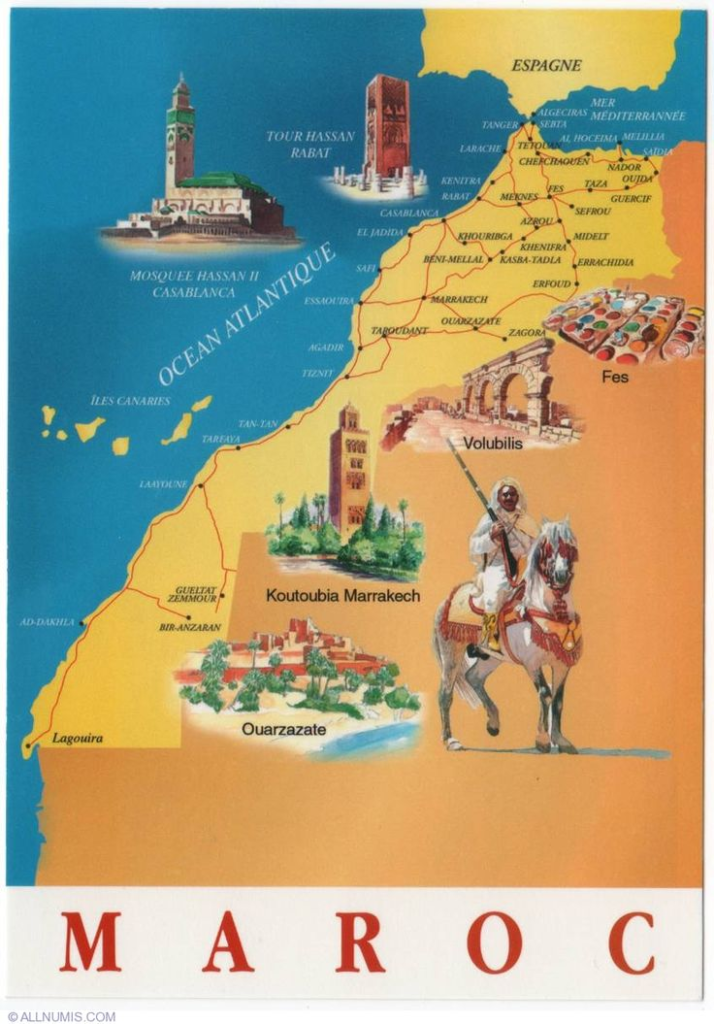Africa, often referred to as the “cradle of humanity,” is a continent of extraordinary diversity, offering travelers a rich tapestry of landscapes, cultures, and experiences. From the vast deserts of the north to the verdant savannas of the south, Africa is a destination that promises both adventure and serenity. In this detailed article, we will explore the top countries for tourism in Africa, providing insight into the attractions, experiences, and cultural gems that make each one unique.
1. Morocco

Morocco is a country of contrasts, offering everything from the bustling markets of Marrakech to the serene beauty of the Sahara Desert. Its rich culture, blending Amazigh and Arab, and some European influences, makes it one of the most diverse and captivating destinations in Africa.
- Marrakech: The vibrant city of Marrakech is famous for its bustling souks, historic palaces, and beautiful gardens. The medina, a UNESCO World Heritage Site, is a maze of narrow streets filled with shops, cafes, and mosques.
- Sahara Desert: A trip to Morocco isn’t complete without venturing into the Sahara Desert. Visitors can take camel treks into the dunes, camp under the stars, and experience the vastness of one of the world’s most iconic deserts.
- Chefchaouen: Known as the “Blue City” for its striking blue-painted buildings, Chefchaouen is a picturesque town in the Rif Mountains. It’s a perfect spot for those looking to relax and explore the charming streets at a leisurely pace.
- Dakhla: Dakhla is a moroccan city, the main economic activity is fishing and tourism. In recent years the town has become a centre for aquatic sports, such as kitesurfing, windsurfing and surf casting, and is known as a centre for water sports.
Morocco’s diverse culture is evident in its food, architecture, and traditions. Visitors can enjoy a traditional Moroccan meal in a riad, experience the ancient art of haggling in the souks, or explore the country’s historical sites, such as the Roman ruins at Volubilis.
Tips
- Morocco can be visited year-round, but spring (March to May) and fall (September to November) offer the most pleasant weather.
- Be mindful of local customs and dress modestly, especially when visiting religious sites.
Keep reading: Top 6 Things Must Do in Morocco
2. Egypt

Egypt is a land steeped in history and is home to some of the most famous ancient sites in the world. For travelers interested in archaeology, history, and culture, Egypt offers an unparalleled journey into the past.
- The Pyramids of Giza: One of the Seven Wonders of the Ancient World, the Pyramids of Giza are a must-see for any traveler to Egypt. The iconic structures, along with the Sphinx, have fascinated visitors for centuries.
- The Nile River and Luxor: Luxor, often referred to as the world’s greatest open-air museum, is home to the ancient temples of Karnak and Luxor, as well as the Valley of the Kings, where the tomb of Tutankhamun was discovered. A cruise along the Nile River offers a serene way to explore these ancient sites.
- Red Sea Coast: For those looking for a mix of culture and relaxation, Egypt’s Red Sea resorts like Sharm El-Sheikh and Hurghada offer world-class snorkeling and diving in crystal-clear waters.
Egypt’s rich history can be experienced not only through its ancient monuments but also through its vibrant cities like Cairo and Alexandria. The Egyptian Museum in Cairo houses an incredible collection of artifacts, including the treasures of Tutankhamun. In the bustling bazaars, such as Khan el-Khalili, travelers can experience the vibrant atmosphere of Egyptian markets.
Tips
- The best time to visit Egypt is from October to April, when temperatures are cooler and more comfortable for exploring.
- If visiting the Pyramids, be prepared for large crowds, especially during peak tourist season.
3. South Africa

South Africa is arguably the most popular and well-known tourist destination in Africa, attracting millions of visitors each year. Known for its breathtaking landscapes, diverse cultures, and an extensive array of wildlife, South Africa offers a complete package for travelers seeking a mix of adventure, history, and relaxation.
- Cape Town and Table Mountain: Cape Town is the crown jewel of South Africa, famous for its stunning location between mountains and the sea. The iconic Table Mountain, one of the New Seven Wonders of the World, offers sweeping views of the city and coastline.
- Kruger National Park: One of the largest game reserves in Africa, Kruger National Park is home to the “Big Five” (lion, leopard, elephant, rhinoceros, and buffalo) and offers some of the best wildlife experiences on the continent.
- Garden Route: This scenic coastal drive is one of South Africa’s most famous road trips. The route takes travelers through lush forests, pristine beaches, and charming towns, offering countless opportunities for hiking, whale watching, and adventure sports.
South Africa’s rich history and cultural diversity can be explored in its numerous museums and historical sites. The Apartheid Museum in Johannesburg offers a sobering look at the country’s turbulent past, while Robben Island, where Nelson Mandela was imprisoned, is a must-visit for history enthusiasts.
Tips
- South Africa is a year-round destination, but the best time for wildlife viewing in Kruger National Park is from May to September, when the dry season brings animals to water sources.
- Cape Town can be windy, especially in the summer months, so pack accordingly.
4. Kenya

Kenya is synonymous with safari adventures and offers some of the most spectacular wildlife experiences in Africa. Beyond its famous savannas and game reserves, Kenya also boasts beautiful beaches along its Indian Ocean coastline and a rich cultural heritage.
- Maasai Mara National Reserve: One of the most famous safari destinations in the world, the Maasai Mara is renowned for its annual migration of wildebeest and zebras, known as the Great Migration. It’s also one of the best places to spot the Big Five.
- Mount Kenya: The second-highest peak in Africa after Kilimanjaro, Mount Kenya offers challenging trekking routes and stunning views of the surrounding landscape.
- Diani Beach: Located along Kenya’s southern coast, Diani Beach is a tropical paradise with white sandy beaches, turquoise waters, and a relaxed atmosphere. It’s perfect for those looking to unwind after a safari.
Kenya is home to over 40 ethnic groups, each with its own unique traditions and customs. Visitors can explore traditional Maasai villages, learn about the Swahili culture along the coast, or visit Nairobi’s cultural museums to gain a deeper understanding of the country’s history.
Tips
- The best time to visit the Maasai Mara is during the Great Migration, which typically occurs from July to October.
- If you plan to climb Mount Kenya, be sure to prepare for the altitude and cold weather at higher elevations.
5. Tanzania

Tanzania is home to some of Africa’s most famous natural wonders, including Mount Kilimanjaro and the Serengeti National Park. It’s a paradise for nature lovers and adventurers, offering everything from wildlife safaris to tropical beaches.
- Serengeti National Park: One of the most famous safari destinations in the world, the Serengeti is best known for its annual migration of millions of wildebeest, zebras, and gazelles. It’s also an excellent place to see the Big Five.
- Mount Kilimanjaro: The highest peak in Africa, Mount Kilimanjaro is a bucket-list destination for trekkers and adventurers. The climb to the summit is challenging but rewarding, offering stunning views and a sense of accomplishment.
- Zanzibar: For those looking to relax after a safari, the island of Zanzibar offers pristine beaches, crystal-clear waters, and a rich cultural history. Stone Town, a UNESCO World Heritage Site, is a fascinating place to explore the island’s Arab and Swahili heritage.
Tanzania is home to over 120 ethnic groups, each with its own traditions and languages. Visitors can explore Maasai villages, learn about Swahili culture on the coast, or visit local markets to experience the country’s vibrant culture.
Tips
- The best time to visit the Serengeti is from June to October, during the dry season, when wildlife is easier to spot.
- If planning to climb Kilimanjaro, it’s important to prepare for the altitude and varying weather conditions.
6. Namibia

Namibia is a land of stark beauty, where towering sand dunes meet the vast expanse of the Atlantic Ocean. Known for its unique landscapes and abundant wildlife, Namibia offers a quieter and less crowded safari experience compared to other African destinations.
- Namib Desert: The Namib Desert is home to some of the tallest sand dunes in the world, including the iconic Dune 45. A sunrise hike up these dunes offers breathtaking views of the surrounding desert.
- Etosha National Park: One of the best places in Africa for wildlife viewing, Etosha National Park is home to a wide variety of animals, including elephants, lions, and rhinos. The park’s salt pans and waterholes attract wildlife year-round, making it an excellent destination for safaris.
- Skeleton Coast: Namibia’s Skeleton Coast is a remote and eerie stretch of coastline, known for its shipwrecks and desolate beauty. It’s a unique destination for those looking to explore Namibia’s wild and untamed landscapes.
Namibia is home to several indigenous groups, including the Himba people, who have maintained their traditional way of life for centuries. Visitors can learn about their customs and traditions through guided cultural tours, providing a deeper understanding of Namibia’s rich heritage.
Tips
- Namibia is a year-round destination, but the best time for wildlife viewing in Etosha is during the dry season, from May to October.
- The Namib Desert can get extremely hot during the day and cold at night, so pack accordingly.
7. Ethiopia

Ethiopia is a country rich in history, culture, and natural beauty. It is one of the few African countries that was never colonized, and its ancient traditions and historical sites have been preserved for centuries. From the rock-hewn churches of Lalibela to the breathtaking landscapes of the Simien Mountains, Ethiopia offers a unique travel experience.
- Lalibela: Famous for its 11 rock-hewn churches, Lalibela is a UNESCO World Heritage Site and one of Ethiopia’s most important religious and historical landmarks. The churches were carved out of solid rock in the 12th century and remain a place of pilgrimage for Ethiopian Orthodox Christians.
- Simien Mountains: The Simien Mountains National Park is a UNESCO World Heritage Site and offers some of the most dramatic landscapes in Africa. The park is home to rare wildlife, including the gelada baboon and the Ethiopian wolf, and is a paradise for hikers and nature lovers.
- Lake Tana and the Blue Nile Falls: Lake Tana is the largest lake in Ethiopia and the source of the Blue Nile. Visitors can explore the ancient monasteries on the lake’s islands or visit the nearby Blue Nile Falls, one of Ethiopia’s most famous natural landmarks.
Ethiopia is a country with a rich and unique culture. The Ethiopian Orthodox Church has played a significant role in shaping the country’s history and traditions, and visitors can experience this through religious festivals, traditional music, and dance. Ethiopian cuisine, particularly injera and doro wat, offers a unique culinary experience for travelers.
Tips
- The best time to visit Ethiopia is during the dry season, from October to March, when the weather is ideal for sightseeing and hiking.
- Ethiopia is a high-altitude country, so it’s important to acclimatize and take precautions to avoid altitude sickness, especially in the Simien Mountains.
8. Botswana

Botswana is a premier safari destination, known for its high-end lodges and exclusive wildlife experiences. With vast, untouched wilderness areas and a commitment to sustainable tourism, Botswana offers some of the best wildlife viewing in Africa.
- Okavango Delta: The Okavango Delta is one of the most unique ecosystems in the world. This vast inland delta is a haven for wildlife, including elephants, lions, leopards, and hippos. Visitors can explore the delta by traditional mokoro (dugout canoe) or on foot, offering an intimate and immersive safari experience.
- Chobe National Park: Chobe National Park is home to one of the largest concentrations of elephants in Africa. The park’s riverfront is a prime location for wildlife viewing, especially during the dry season when animals gather at the water’s edge.
- Makgadikgadi Pans: The Makgadikgadi Pans are one of the largest salt flats in the world, offering a stark and surreal landscape. Visitors can explore the pans by quad bike, visit traditional San Bushmen communities, or witness the incredible zebra migration.
Botswana’s San Bushmen are one of the oldest continuous cultures in the world. Visitors can learn about their traditional way of life, including hunting and gathering techniques, through guided cultural tours. Botswana’s commitment to eco-tourism also ensures that cultural experiences are conducted in a sustainable and respectful manner.
Tips for Travelers
- The best time to visit Botswana for wildlife viewing is during the dry season, from May to October, when animals congregate around water sources.
- Botswana’s safari lodges can be expensive, but the country also offers more affordable options for budget-conscious travelers.
9. Uganda

Uganda, often referred to as the “Pearl of Africa,” is a country of stunning natural beauty and diverse wildlife. It is one of the few places in the world where visitors can trek to see endangered mountain gorillas in the wild, making it a bucket-list destination for wildlife enthusiasts.
- Bwindi Impenetrable Forest: Bwindi is home to over half of the world’s remaining mountain gorillas, and trekking to see these incredible creatures in their natural habitat is one of the most unforgettable experiences in Africa.
- Murchison Falls National Park: Murchison Falls is Uganda’s largest national park and is famous for its powerful waterfall, where the Nile River plunges through a narrow gorge. The park is also home to a wide variety of wildlife, including elephants, lions, and giraffes.
- Queen Elizabeth National Park: This diverse park offers a mix of savanna, forest, and wetlands, providing a habitat for a wide range of animals. It’s one of the best places in Uganda for a classic safari experience.
Uganda’s rich cultural heritage is evident in its traditional music, dance, and art. Visitors can learn about the country’s diverse ethnic groups, including the Batwa pygmies, who have a long history of living in harmony with the forest. Uganda’s vibrant markets and bustling cities also offer a glimpse into everyday life in this dynamic country.
Tips
- Gorilla trekking in Bwindi requires a permit, which should be booked well in advance, as the number of visitors is limited to protect the animals.
- Uganda’s rainy seasons are from March to May and October to November, so plan your trip accordingly if you want to avoid the rain.
10. Ghana

Ghana is one of West Africa’s most popular tourist destinations, offering a rich blend of history, culture, and natural beauty. From the bustling streets of Accra to the historic forts of the Gold Coast, Ghana provides a unique window into both the past and present of West Africa.
- Cape Coast and Elmina Castles: These historic castles are a stark reminder of Ghana’s role in the transatlantic slave trade. Visitors can take guided tours of the dungeons where enslaved Africans were held before being shipped to the Americas, offering a powerful and emotional insight into this dark chapter of history.
- Kakum National Park: This beautiful rainforest park is home to a variety of wildlife, including forest elephants, monkeys, and over 250 species of birds. The park’s canopy walkway, suspended high above the forest floor, offers breathtaking views of the surrounding jungle.
- Mole National Park: Mole is Ghana’s largest national park and offers excellent wildlife viewing opportunities. Visitors can spot elephants, antelopes, and baboons, and the park’s lack of large predators makes it safe for walking safaris.
Ghana is known for its warm hospitality and vibrant culture. Visitors can experience traditional Ghanaian music and dance, explore the bustling markets, or learn about the country’s rich history through its numerous museums and cultural sites. Ghana’s diverse ethnic groups, including the Ashanti, offer unique cultural experiences that provide a deeper understanding of West African traditions.
Tips
- Ghana’s climate is tropical, with a wet season from April to October, so plan your visit accordingly if you want to avoid heavy rains.
- English is widely spoken in Ghana, making it easier for travelers to navigate the country.
Africa’s Diverse Travel Opportunities
Africa is a continent of immense beauty and diversity, offering something for every type of traveler. From the vast savannas of Kenya to the vibrant markets of Morocco, each country has its own unique charm and attractions that make it a must-visit destination for any traveler looking to explore the wonders of the African continent.
Keep reading: Zanzibar Travel Guide: Explore the Spice Island on Budget








